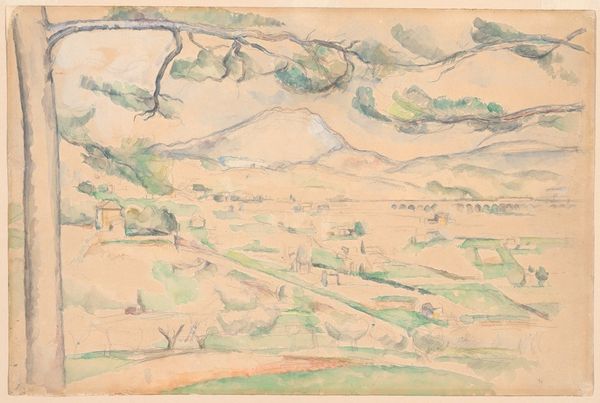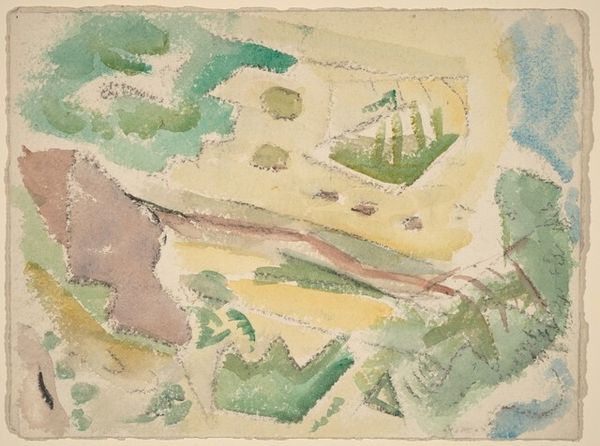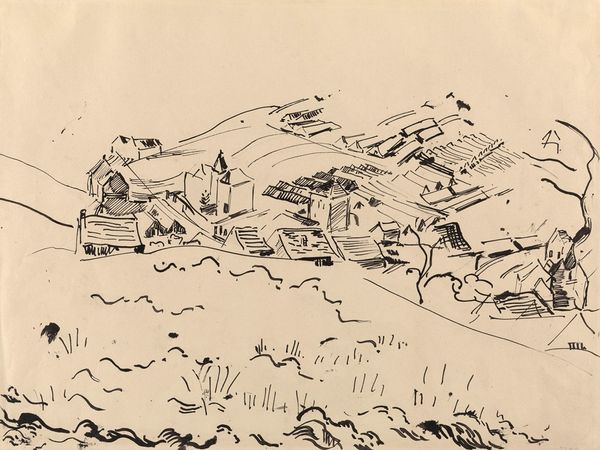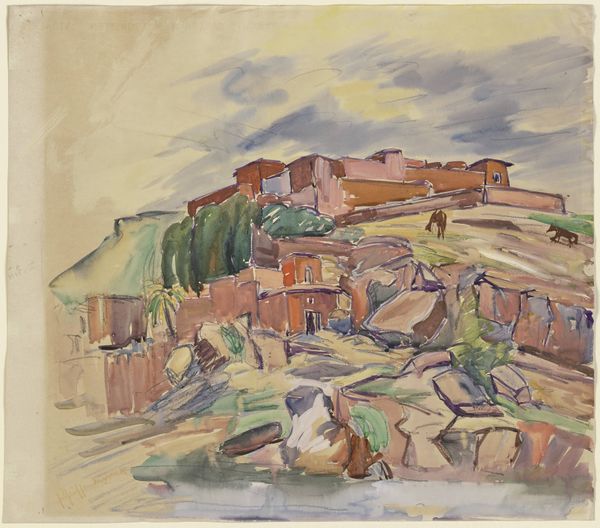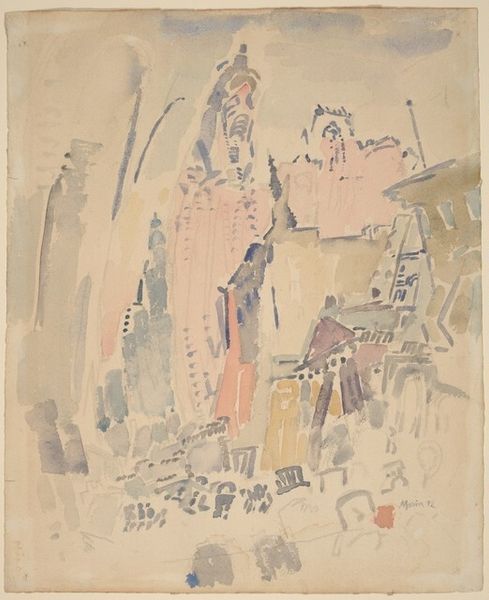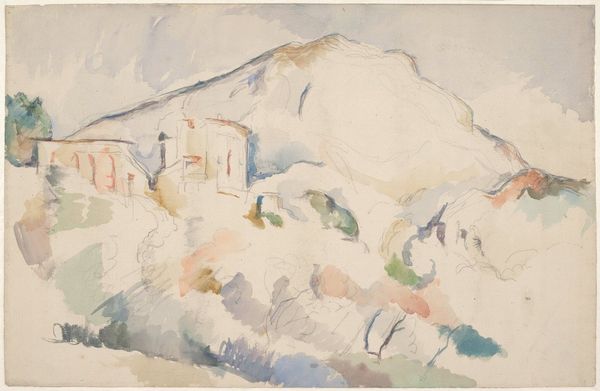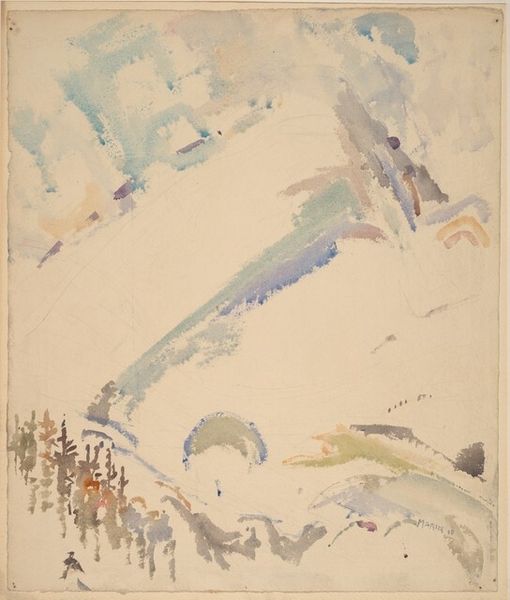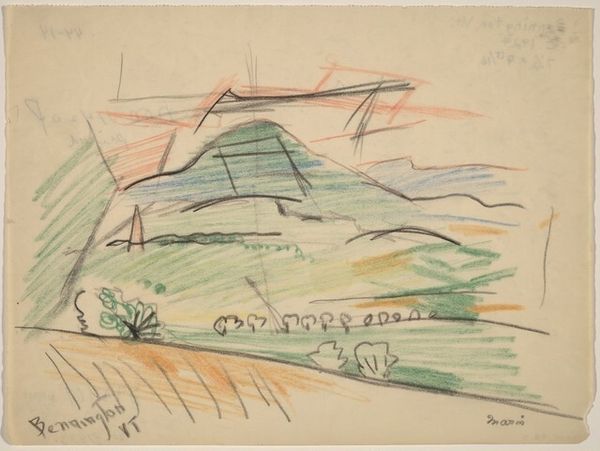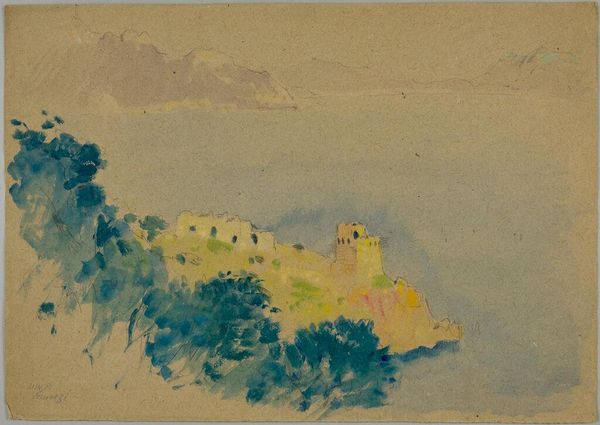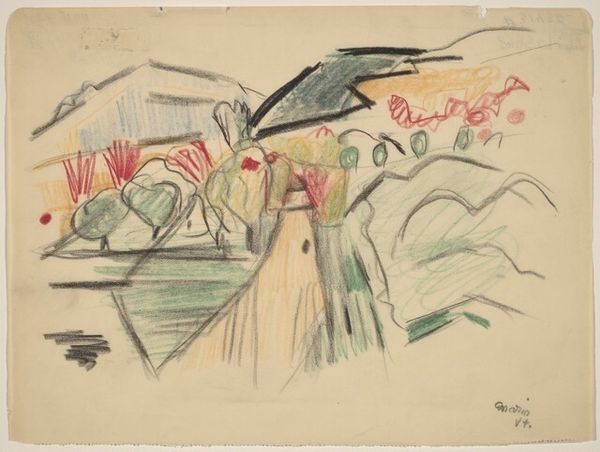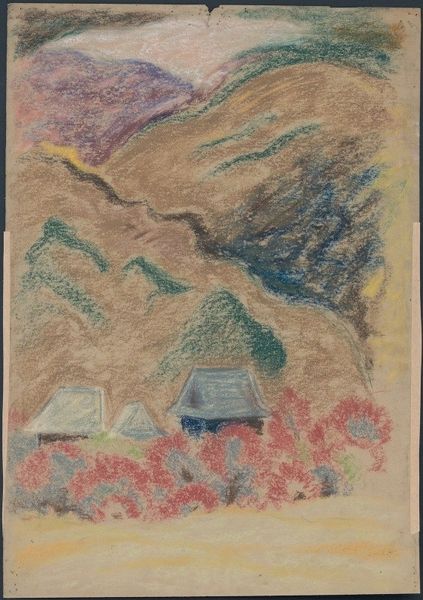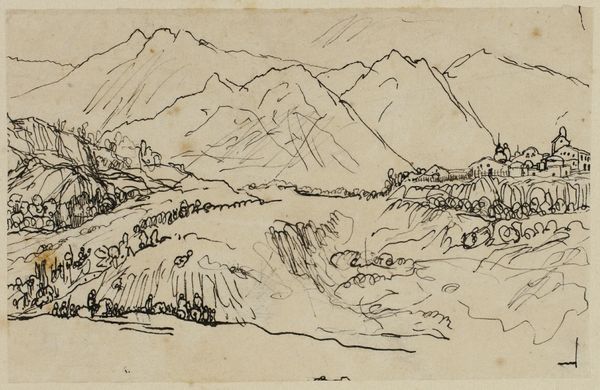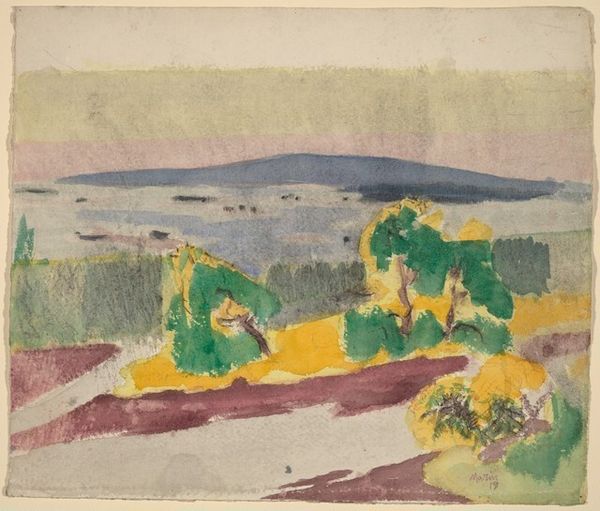
coloured-pencil, painting, watercolor
#
cubism
#
coloured-pencil
#
painting
#
landscape
#
watercolor
#
coloured pencil
#
geometric
#
cityscape
Copyright: Public domain US
Editor: Here we have Albert Gleizes' "Houses in a Valley" from 1910, a piece rendered with watercolor and colored pencil. I’m struck by how the houses seem almost nestled into the landscape, as if they're part of it, not just placed on it. What do you make of this scene? Curator: It whispers to me of the search for order amidst chaos, a feeling that's strangely familiar, isn't it? Look how he breaks down the scene into geometric forms, a very Cubist leaning, but softens it with those delicate washes of watercolor. It feels like an attempt to build a rational world from fleeting impressions. What colors catch your eye the most, and why? Editor: Definitely the blues and purples in the sky. They feel like they're trying to peek through all of the earthy tones. It keeps the landscape from feeling heavy or weighted down. Curator: Precisely! Gleizes uses them like a secret ingredient, lifting the whole scene. Now, think about 1910 – just before the world plunged into the Great War. Do you think this yearning for harmony, for houses fitting snugly into the valley, might be a quiet rebellion against the looming dissonance? Maybe it’s a collective yearning to restore a sense of balance and interconnectedness. Editor: I never considered it that way. It adds a whole other layer to it, knowing the context. It goes from a peaceful landscape to a more active hope or resistance. Curator: Absolutely, art often reflects and anticipates the temperaments of an age. It really urges us to question not just *what* we see, but *why* we see it in that particular way. Doesn’t that thought just fill your cranium? Editor: It definitely does! It makes me excited to see these historical movements and how each artist was trying to make a claim about society and culture.
Comments
No comments
Be the first to comment and join the conversation on the ultimate creative platform.
